Last Stop In America
- Richard Namikas
- Jul 30
- 7 min read
We had been sailing up the west coast of Canada and Alaska for the last couple of weeks and have gotten off in several places hoping to see bears. Unfortunately, the closest we got was seeing the butt of one bear running away near Icy Strait Point about 10 days earlier. Ellie was bound and determined that she was going to see one, and the last chance we had was when we were in Kodiak, Alaska. Since there was only one seat left on the float plane for an excursion that day, we made sure that Ellie was on it so that she would have her chance to see her bears.
Shelly had offered me a seat on an excursion to do some driving around the island of Kodiak, looking for wildlife and doing photography. On the day of the excursion, it was only Kit and Jon who were able to go on the trip with me.
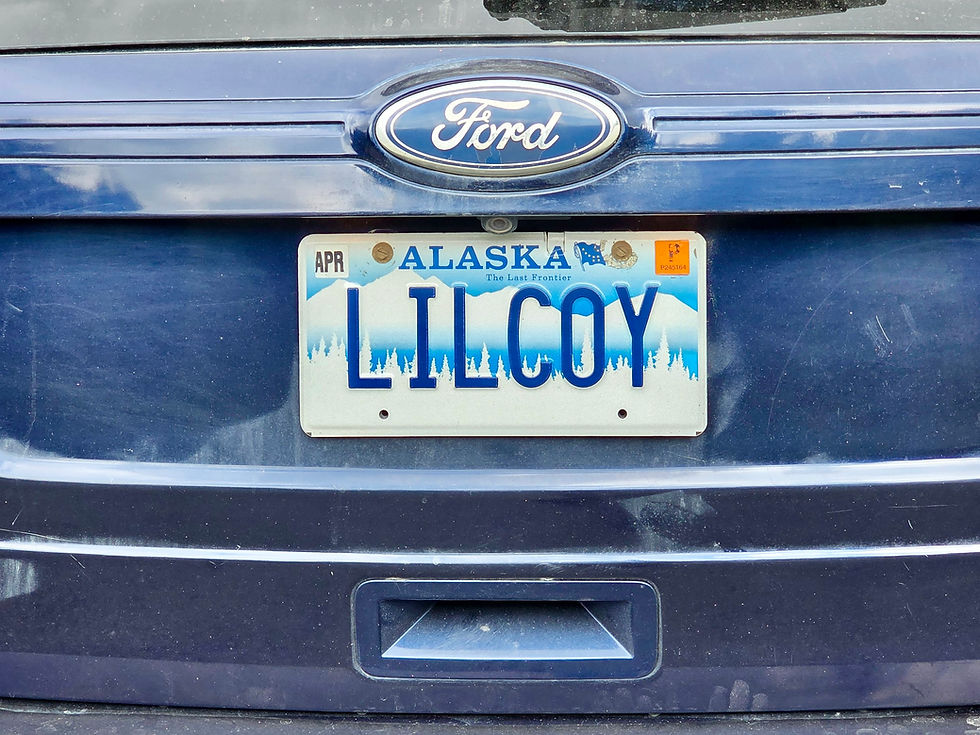
It didn't take her long to drive us out of the city of Kodiak past the World War II ship that had been permanently attached to the waterfront on the main street to become the largest fish processing plant in the city. A few blocks from there and we were passing the old Russian Orthodox church with the bright blue spire.

She told us that the salmon should be running any time now, and that would be the best time to see the bears at The Creeks. Unfortunately, the run had not started in earnest yet. Fortunately, there was still plenty of other flora, fauna, and beautiful scenery to be experienced in Kodiak.
The moss-covered forest floor of the temperate rainforest and the old man's beard hanging from the trees were an indication of just how healthy the environment was. Looking in the streams, you could see crystal clear water but no fish running. Janet had extensive knowledge of the fisheries from working in the field for years and years and told us that the salmon had recovered in numbers after a few hard years. She told us about the Chinook, Coho, Sockeye, Pink, and Chum salmon that ran these waters. She educated us on which ones would be spawning in the rivers and which would be spawning in the lakes. At a site where they did the fish counts on the Busken River, we could see over a hundred of them near a screen that was periodically removed from the river to let them pass. The number of salmon measured for that location was nearly 40% over what they had seen last July, and so they upped the bag limit for salmon effective immediately.

Further up the river, we stopped at a small pond where we saw a kingfisher flying around that never slowed down enough for me to get a decent picture. While we were standing there a couple of deer wandered from the woods to come out and stare at us. The view was enchanting, and Janet pointed out Pyramid Mountain in the distance.



We returned to the Pacific shoreline and passed the largest Coast Guard station in the United States on our way to wind our way around Women's Bay. In the center of Women's Bay is what they call Sometimes Island because when the tide is in, it is an island. When the tide is out, you can walk to it. The tides are pretty extreme in this part of the world and it was a constant danger to hikers and boaters alike.
We pulled off the road onto the shoulder in time to see a kingfisher land on a branch not far from us, and he stayed there, giving me an excellent opportunity to get a few good shots of him. This made up for the lost opportunity at the little pond up in the mountains.
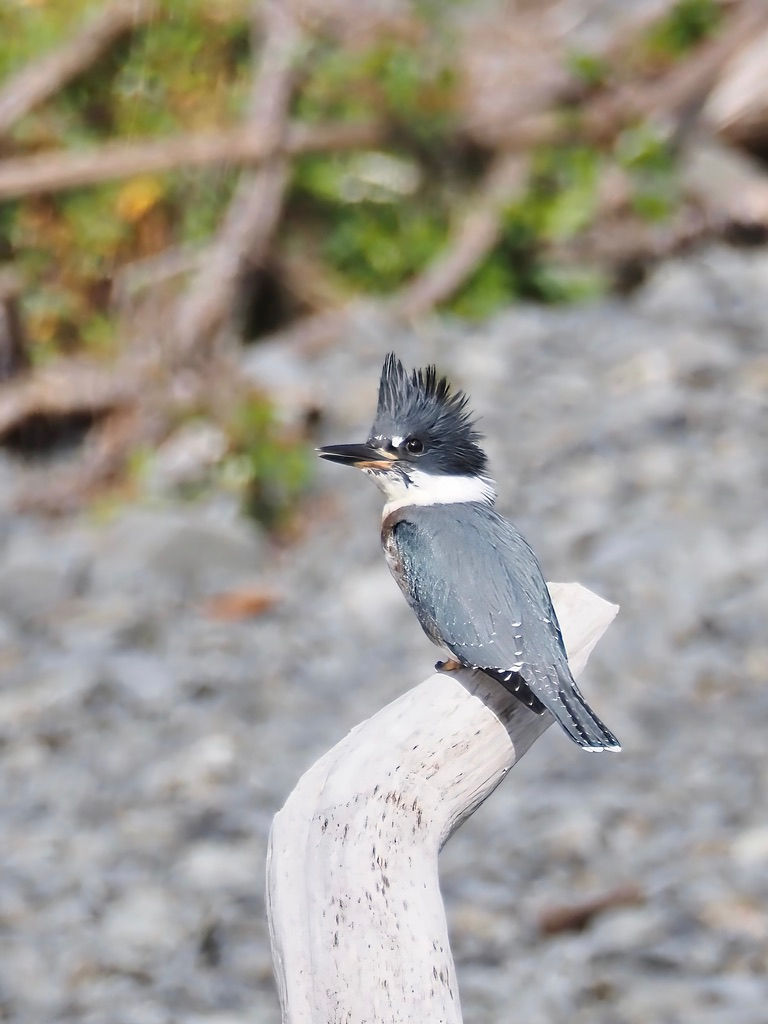
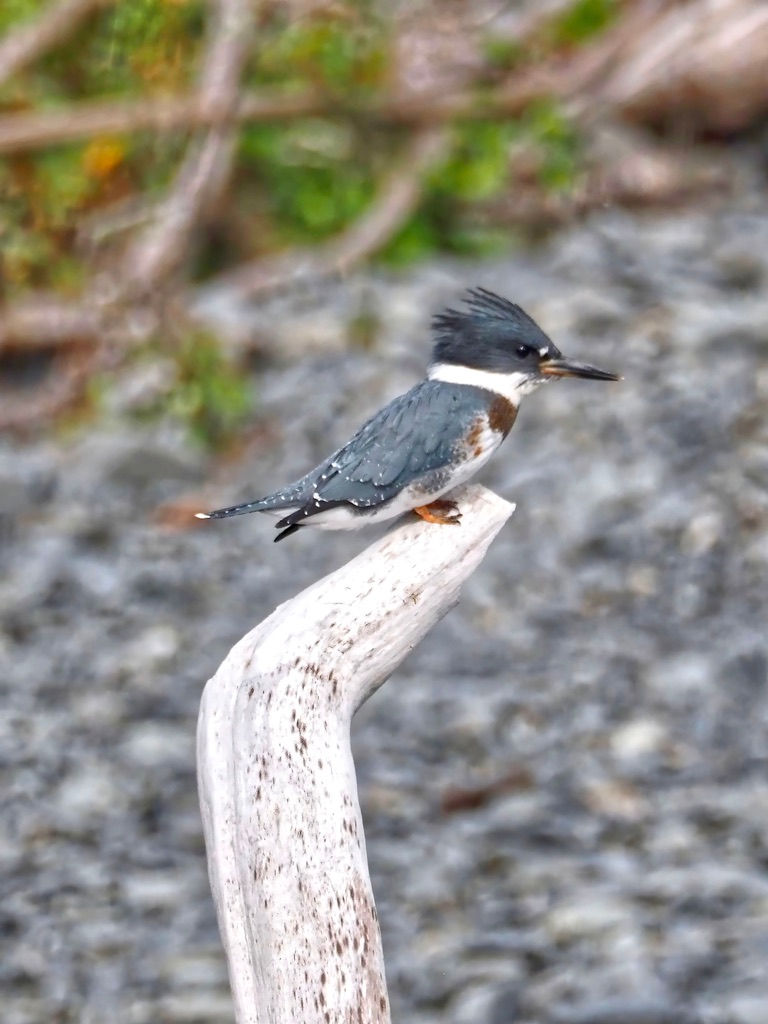
Looping around the bay to a high point on the other side of the bay, we were able to look down on the grassy flats surrounding the dark blue waters. To one side, a shipwreck could be seen that had been left there as a warning to mariners about how drastic the tide changes could be and how easy it would be to get stuck in the muck. Overlooking this scene was a long bench carved from a single log in memorial to a young woman who had died just a few years before. There were little flowers planted along the top of the bench and behind it, making it a lovely place to sit, relax, and enjoy the scenery.


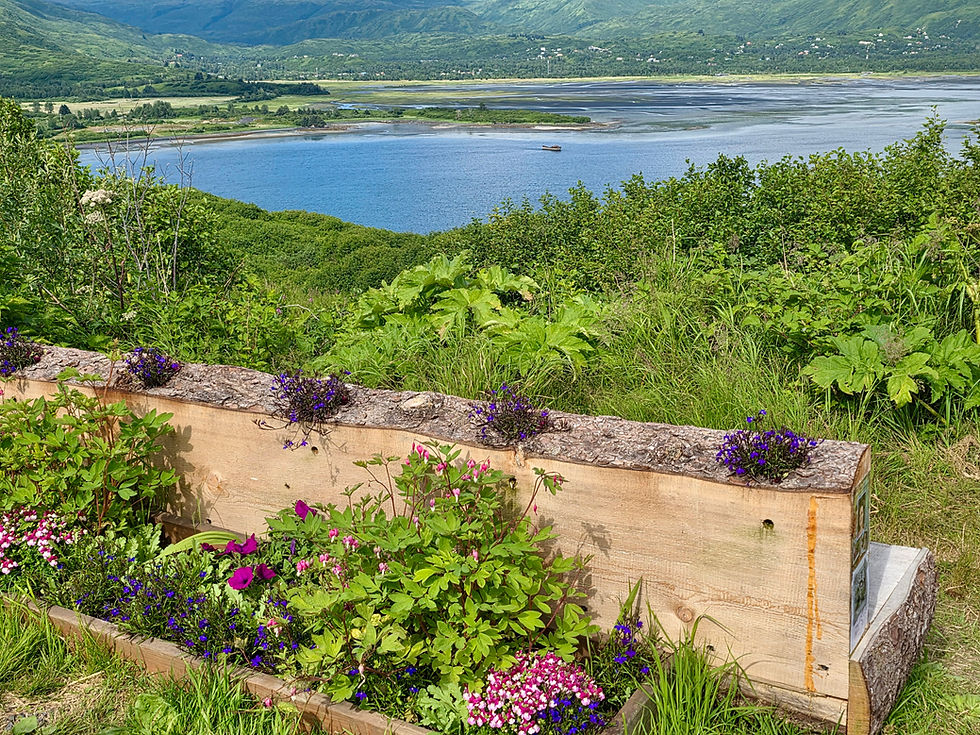
We returned to a little spot in the woods along the stream to have a snack of homemade smoked salmon spread and watch the lazy water drift by. From the corner of my eye, I saw what looked like a duck and ducklings just disappearing out of sight. I asked Janet if I could walk along the stream a little bit, and she said as long as I did not run from any bear, I could wander a little bit. I went upstream where I had seen the movement a minute before.What I had thought was a duck turned out to be about a dozen swimming behind their mother merganser. I took the opportunity to get off a few shots and felt happy about my wildlife viewing for the day.
She drove us on to Mill Bay, where we got out and were able to see the beauty of the water meeting the rugged shoreline. The Sitka spruce precariously hung on to the hard rock, which was pushed up in layers pointing up at the sky.

We finished our driving excursion at White Sand Beach. The beach was actually a combination of sand and ash. The ash was the result of a major volcanic eruption in 1912 of Novarupta. This eruption was the largest volcanic eruption of the 20th century and one of the largest in recorded history, 30 times larger than the Mt. St. Helens eruption, according to the U.S. Geological Survey. The patterns that the different colored sands made by being swept around by the wind and water were an artwork in and of themselves. The beach also served as a playground for little dogs to run around and enjoy the day as well.


I had nothing planned for the rest of the day and was thinking I would just head back to the ship. Jon and Kit were planning on a boat excursion that Janet knew about. When Janet said that there might be puffin sightings on the outing I asked if I could join in.
Fortunately, Captain Lee Robbins had room for one more person on his boat that day, and I was able to join them. Walking out to the docks, Captain Lee pointed out his boat. It was a large silver catamaran with a big central cabin that had a painting of a whale on the roof. There were four more residents from The Odyssey that joined us on the boat, and with most of us being of a silver-haired age, the captain was sure to tell us to stay safely inside the cabin whenever the ship was moving. After a few words with him, we established a degree of comfort where he gave permission to walk out to the bow of the cat while we were in the areas where we would see the puffins and otters and such. As the captain learned more about my photographic interests he started giving me more and more tips on the best ways to get good shots of wildlife that day. 1/3200 of a second with the rest of it set on automatic, take lots of pictures knowing that I'd throw a bunch of them away.
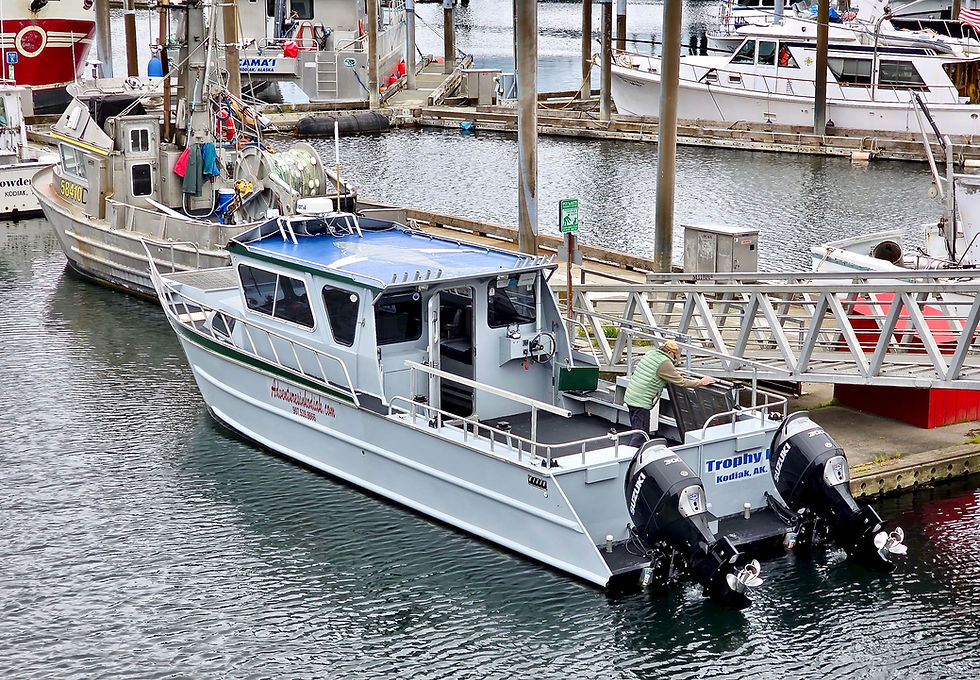
On the way out of the harbor, the captain pointed out a grove of Sitka spruce across the way that housed a massive aerie for a fledgling bald eagle, with the parent standing proudly to the side. Of course, I got a few shots of that, and it was a great start to our little boating excursion.


It wasn't a long haul until we were approaching a small island that had birds swooping and turning all above and around it. Most of what I saw flying were obviously seagulls, but then every once in a while, you would see the rapid fluttering of the small black-winged birds that I recognized from my previous visit to Iceland as being puffins. I was out on the bow when the captain started pointing to the left and the right calling out the types of birds that I was seeing. In the cliffs up above you could see the nesting pairs of puffins waddling along in their little tuxedos with bright orange beaks. There were the tufted puffins with a little orange feather making the appearance of a ram's horn at the top of their head and the horned puffins with little spikes on top of their heads. Here and there, we saw little brown heads popping up among the sea kelp. Most of what we saw were sea otters, with the occasional spotted seal here and there.



I did go a little crazy trying to catch birds in flight everywhere I looked, and taking long shots of the nests on the cliffsides. I knew there was a lot of stuff out of focus and just impossible to see, but I took the shots anyway. I knew that I would throw a bunch of them away later. Approaching a point at the end of the island, what seemed like a thousand birds all took off at once, changing the sky from blue to polka-dotted piece of modern art with the green mountains in the background.



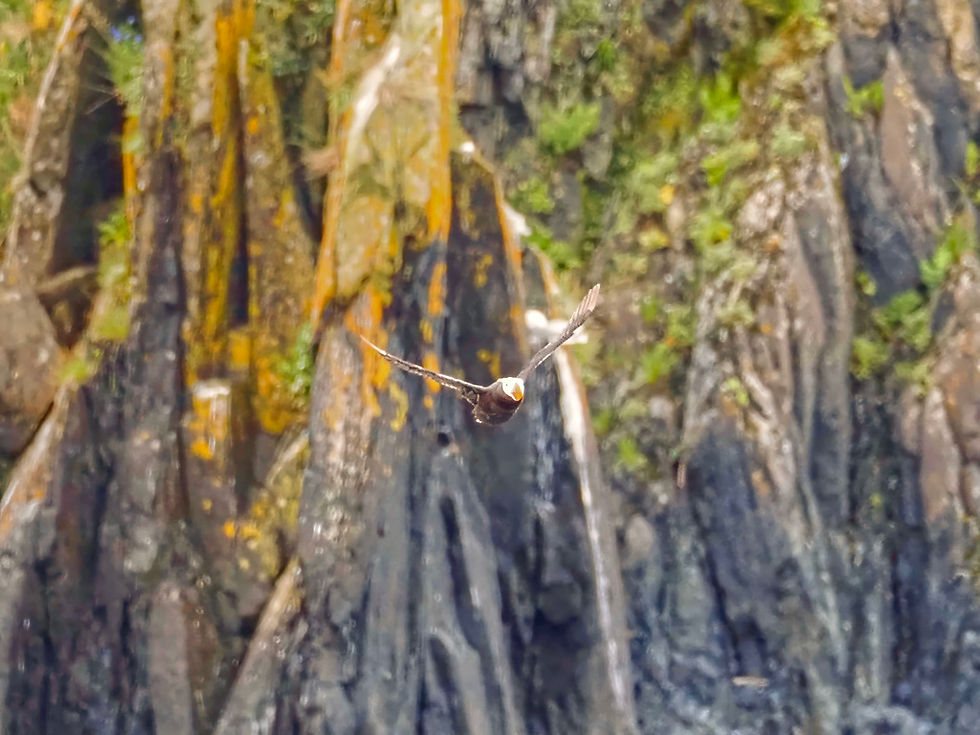

We spent the next several hours going from place to place, seeing wildlife and nature that made this one of those rare places in the world that still felt wild and fresh. The captain thought that there was some whale activity just out past where the tide was turning the smooth water to choppy to rough and tried to go out to that point. Unfortunately, the waves got a little too high, and with the wisdom of a seasoned skipper he turned back towards the smoother water closer to shore. It turned out to be a good choice because there were cute groups of otters that seemed to call out to us as we passed.



We passed the Odyssey on the way back to shore and saw one of the last tenders heading back out to her. As we got back to the dock, there was a bald eagle standing on top of some of the pier signage. Back up in the parking lot, that same bald eagle flew around us a few times, giving me the last opportunity to get a nice close-up of a bird in flight, this one large enough and close enough to see a little detail.





We caught the very last tender from the very last port in the very last place that we would be in North America before a nine-day journey to Japan.
And yes, Ellie did get to see her bear. In fact, it was seven of them. But that is her story to tell.



Loved your commentary and photos. Thank you for sharing.
Not only did I enjoy your photos but your writing is so enjoyable to read. I noticed your RicPics business card out work and remembered that you would most likely create your journey both with pictures and words here better then a facebook post.
Nice pictures. On the trip to Japan did you get to encounter the tsunami?